Located in the southern foothills of the mountain behind the Tsetang Town in Shannan City.
Tse Chokpa Monastery, formerly known as Tse Chokpa Dratsang, was built on the west side of Zongshan and was originally called “Bajia Gunba”.
Over six hundred years ago, the great master of Phagdru Kagyu, the Tai Situ Yangchub Gyaltsan (1302 – 1364 AD, “Tai Situ” was a title conferred during the Yuan Dynasty with meaning “Grand Minister”, a leader of the Phagmo Drupa Regime in Tibet, which combined political and religious authority), overthrew the local government of Sakya regime and established the Phagdru local government in Naidong region. In 1356 AD, the Tse Chokpa Monastery was founded and later converted to the Gelug Pa of Tibetan Buddhism.
Buildings
Tse Chokpa Monastery appears to be a five to six-story tall building from the outside, but in reality, the main front building consists of only three stories, aligned with the slope of the mountain at the back. Three additional stories of monk rooms are built on the flat slope, making it appear quite large.
The main hall is named “Tse Chokpa Main Hall”, with several stone steps in front of the hall leading to a front corridor with almost 6 meters in depth, and 45 meters in width. The walls of the front corridor of the main hall are painted with images of heavenly kings and the image of circle of life, all of those are seemed to be painted in the Qing Dynasty
The main hall consists of 40 pillars approximately over 1100 square meters, with a central courtyard with size of 36 square meters.

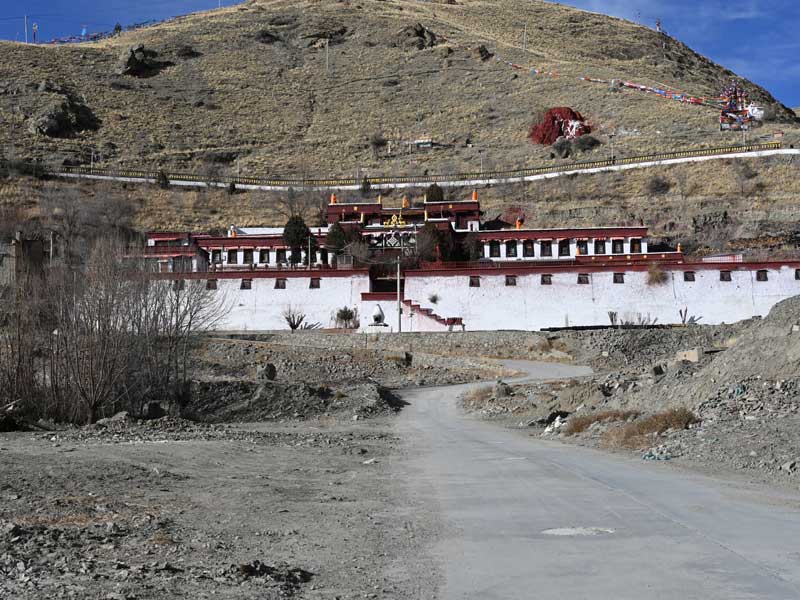
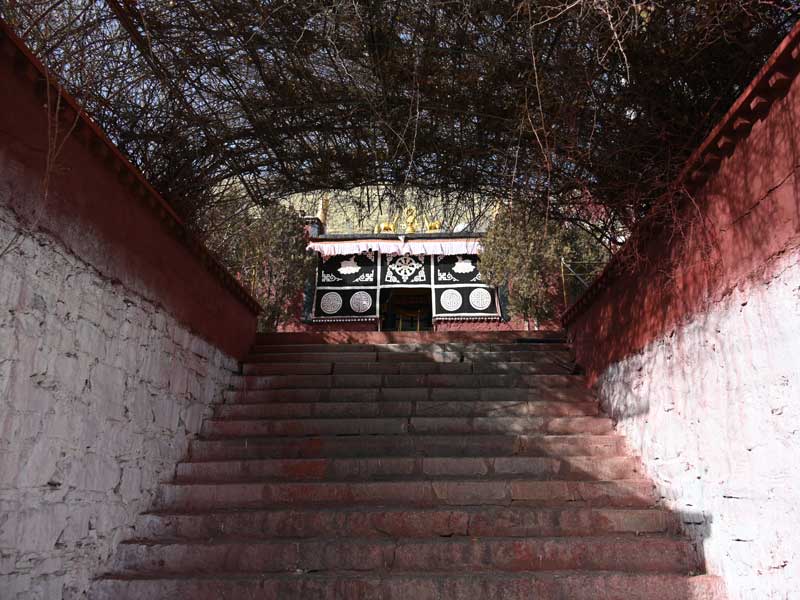
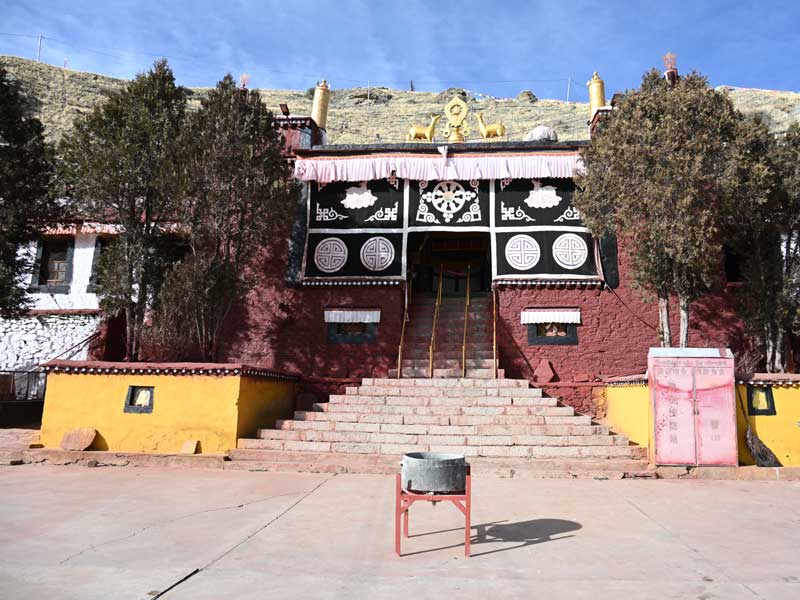
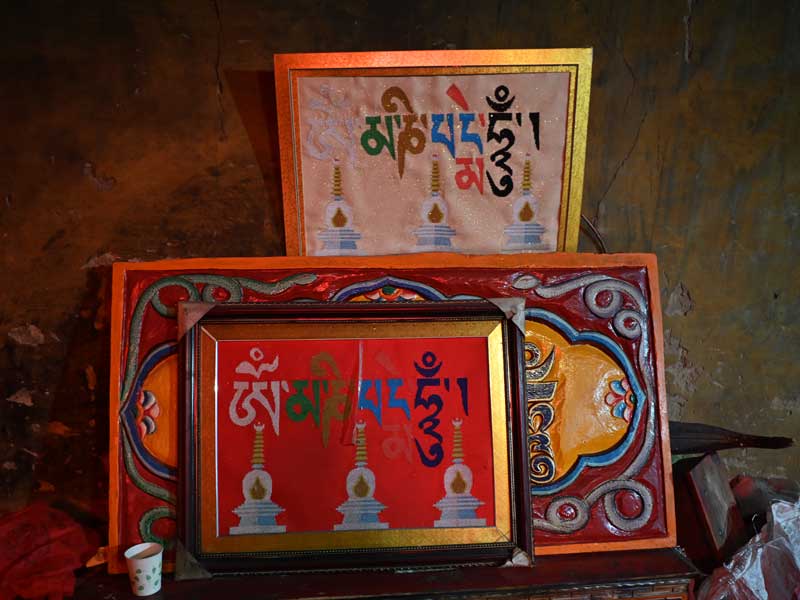
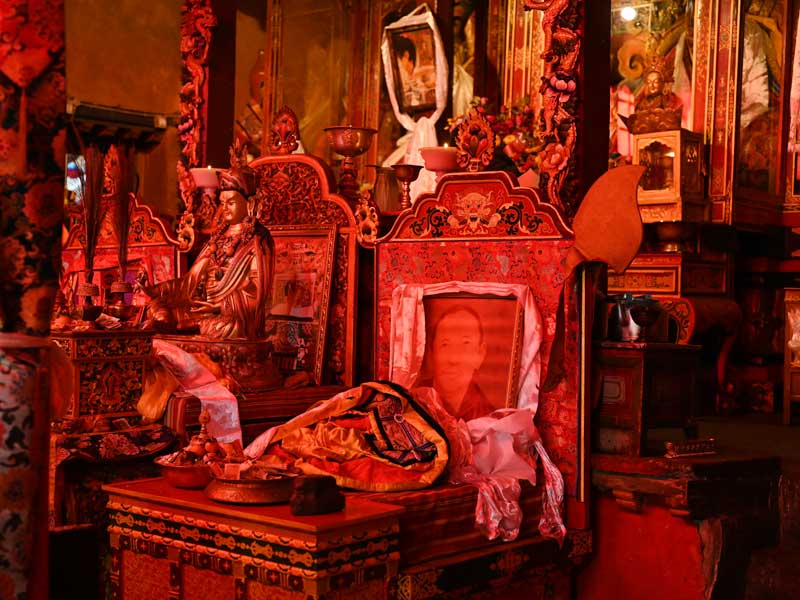
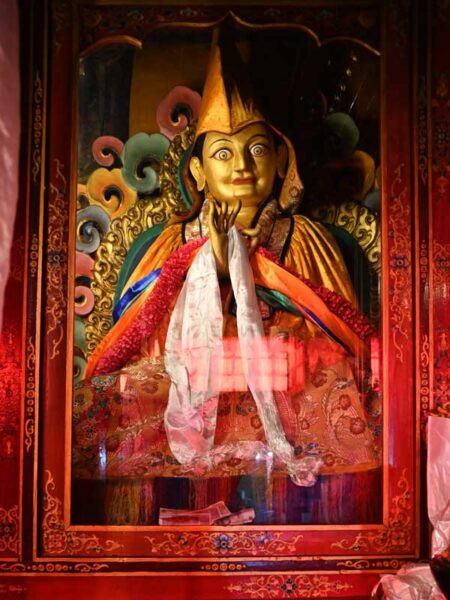
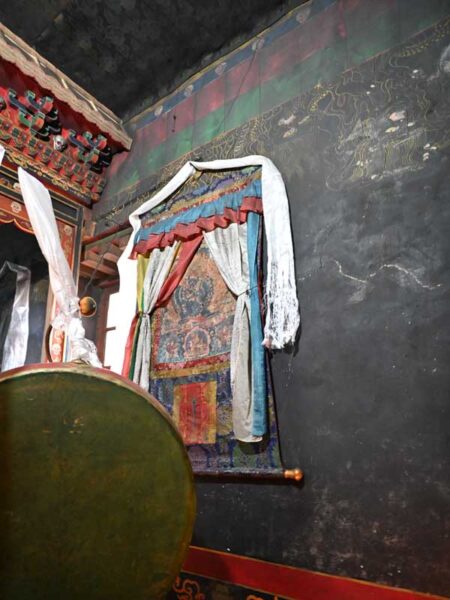
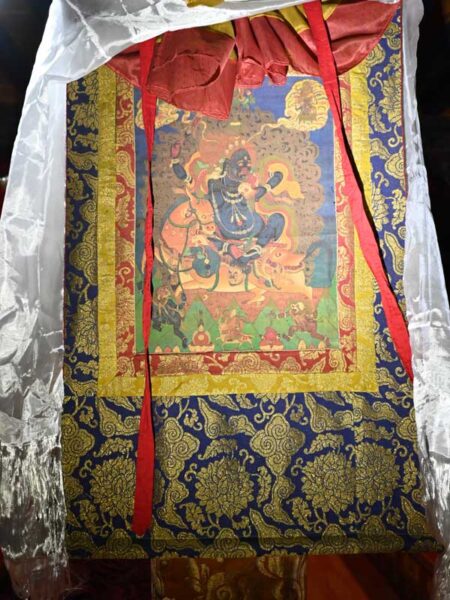
Inside the main hall
Inside the main hall, the left and right walls are painted with images of Shakyamuni Buddha preaching, while the southern wall depicts various guardian deities. Around the hall, there are approximately 1090 scripture cases placed on scripture racks.
Upon entering the rear hall’s corridor, on the left side stands a sculpture of Shakyamuni Buddha, on the right side stands a statue of the goddess Tara , and next to it is a statue of the Fifth Dalai Lama. In between the statues, there is a Buddha statue cabinet containing several small bronze Buddha statues and a sculpture of the first abbot of this monastery.
The rear hall is about 12 meters in deepth and 36 meters in width, houses the main statues of the Three Buddhas (namely the past Buddha-Dipamkar, present Buddha-Shakyamuni, and future Buddha-Maitreya); and on the two sides of the “Three Buddhas”, there are 8 great Bodhisattvas, namely Mañjuśrī, Samantabhadra, Avalokitasvara, Vajrapāṇi, Ākāśagarbha Bodhisattva, Kṣitigarbha, Maitreya, and Sarvanivāraṇa-Viṣkambhin. These eight statues are simple and dignified.
On the southern walls of the main hall, there is a single guardian deity statue on the left and right side.
In the rear left hall, there is a statue of the great master Tsongkhapa and his two disciples. On the left of Tsongkhapa’s statue is Gyaltsha Je, and on the right is Khedrup Je. Adjacent to these two statues are also statues of two Gadang pa lamas, with Atisa on the left. The left wall of the hall features statues of the Three Buddhas (Dipamkar, Shakyamuni, and Maitreya), while the right wall displays statues of Vajrasattva, Vajrapani, and Maha Sitatapatra (the Great White Umbrella Buddha, also known as “Dugnam” in Tibetan).
In the rear right hall, there is a temple dedicated to Dharma protectors, with two side halls on the east and west. It is said that the golden sutra scroll wrapped in a skin cover, which is housed in “Qiangbala Kang,” was brought from India by the 3rd Panchen Lama, Ensa Lobzang Dondrub (1505 AD – 1566 AD), making it very precious.
Cultural relics
Tse Chokpa Monastery houses many exquisite handicrafts, with the most famous being the “Silk Thangka of Shakyamuni” and the “Avalokiteshvara Thangka.” Among them, the “Silk Thangka of Shakyamuni” is said to have been personally embroidered by Princess Wencheng and is considered a treasure of the monastery
Silk Thangka of Shakyamuni”
The statue of Sakyamuni Buddha is 2.92 meters high and 1.72 meters wide. The Buddha image has a blue background with golden borders. Sakyamuni Buddha is depicted wearing a red kasaya, exposing his right shoulder, and adorned with the auspicious symbols of the Eight Treasures (the Dharma wheel, conch shell, parasol, victory banner, lotus flower, Treasure Vase, golden fish, and endless knot) on the kasaya. The skin color is depicted as golden, with a multicolored halo adorned with lotus flowers.
Sakyamuni Buddha is seated in the lotus position on a lotus throne, with his right hand touching the ground in the earth-touching mudra and his left hand in the meditation mudra. In the upper left corner of the painting is the sun, there is the three-legged golden crow in the center, and on the right, there is a moon with a rabbit pounding medicine under a cassia tree. At the top of the painting, there are two lines of Sanskrit. The entire thangka is meticulously woven, tightly structured, extraordinarily exquisite and magnificent, representing a masterpiece among silk images.
Avalokiteshvara Thangka
The “Guanyin (Avalokiteshvara ) Thangka” measures 79 centimeters in length and 23.5 centimeters in width. The main subject of the Thangka is a standing statue of Guanyin Bodhisattva, with a style influenced by Indian art, wearing a crown adorned with turquoise beads, a round face, earrings, and a necklace on the chest. The right arm hangs down while the left arm is bent in front of the chest, holding a single-stem lotus flower. Both arms are adorned with bracelets, and the figure wears shorts with a skirt tied around the waist, barefoot with ankle bracelets, standing on a lotus pedestal. At the bottom of the Thangka, there are two worshippers, one seated on the left, and the other standing with hands clasped in prayer. The back of the Thangka is inscribed with Tibetan scriptures. Based on the artistic style, the Thangka is estimated to be painted from the 9th to 11th century.
In addition, there is also a rare and precious “Eleven-faced Avalokiteshvara Bronze Statue”.
Eleven-faced Avalokiteshvara Bronze Statue
The statue is 35 cm tall, 18 cm wide, and 9 cm thick. The top of the head is damaged, with ten faces remaining: three on the bottom layer, one on the top layer representing a protective deity. The statue has eight arms: a pair of hands clasped in front of the chest, a pair hanging down to the knees with the left hand holding a treasure vase, and the remaining four arms bent upwards holding a lotus flower, a jewel, and other items.
The nose is high and straight, the lower lip protrudes, large earrings adorn the ears; the arms have bracelets, each hand has two sets of beads, and the palms have wheel spokes; the upper body is bare, the lower body wears a skirt, broad shoulders, slim waist, sitting in a lotus position on a triangular cushion. The entire design, especially the facial expressions and waist, exhibits clear Indian influences, with significant historical and artistic value.
Moreover, Tse Chokpa Monastery also houses a historical treasure called the “Polhanas Imperial Edict”. Currently held by the Cultural Relics Management Committee of Shannan City. The edict is written on a yellow satin scroll, measuring 3.8 meters inlength and 0.74 meters in width, with the top line in bold Sanskrit (not yet deciphered). The edict was issued by Polhanas·Sonam Dorje (1689 AD – 1747 AD) in the year 1730 AD on the 30th of October to the Tse Chokpa Monastery. The edict specifies the monastery’s authority, the number of monks, slaves, estate boundaries, etc., signed by the Ganden Podrang government, with a small seal above and two large seals below, all in Mongolian script. The edict dates back 270 years.



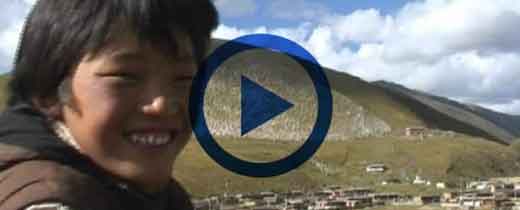
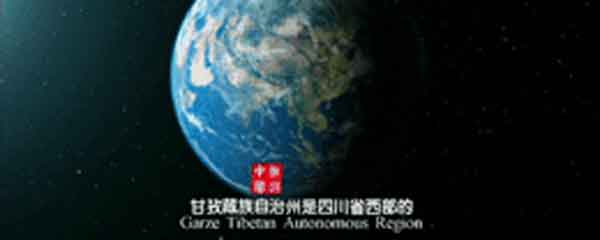
Leave a Reply